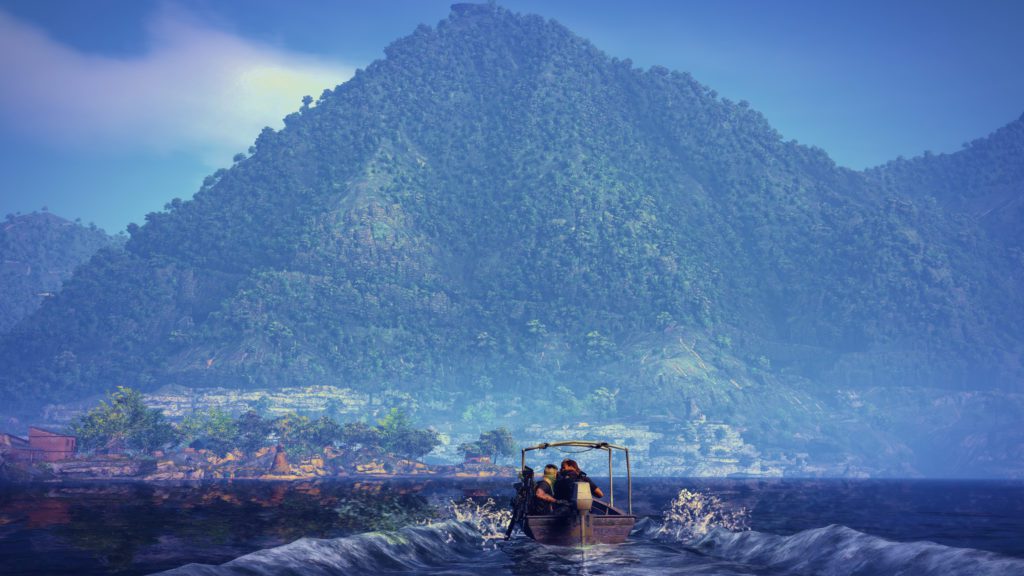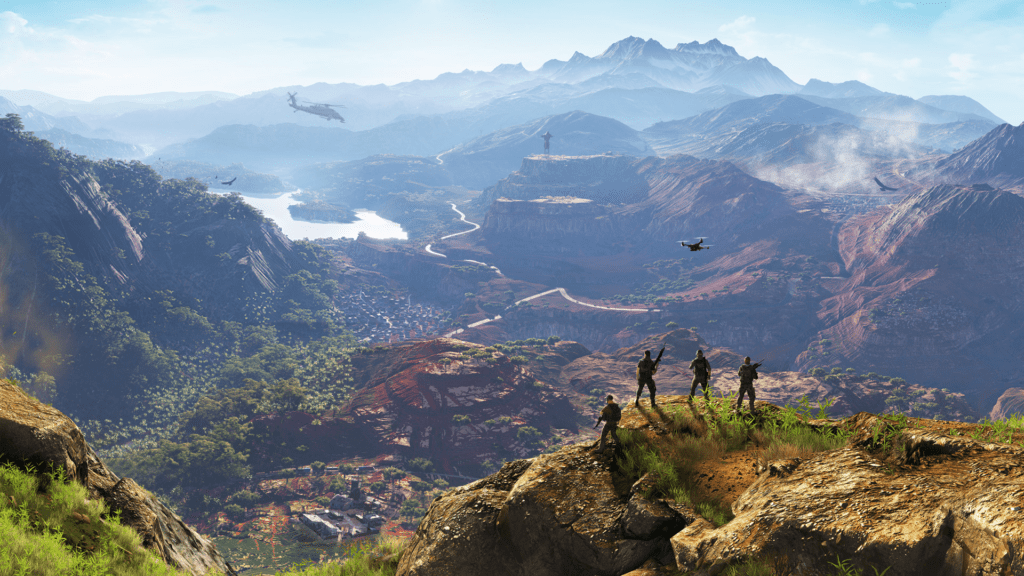Image Credits: Vinny GRed
You have likely walked this path before. If not in traversing the fictional narco-state Bolivia as depicted in Wildlands, then perhaps in another open-world title comprised of a similar form. Tom Clancy’s Ghost Recon: Wildlands is a Ubisoft game, or more fittingly, a Ubisoft open-world game. As the environment around the player does change with each iteration, the framework remains impervious. To plunder collectable trinkets by the hundreds, illuminate the darkened game map piece by piece, and to grapple with a loosely fitting stealth mechanic is to find yourself deep within the throws of a Ubisoft action-adventure experience. Though as the games that succeeded it threaten to invoke change, Wildlands’ issues become all the more evident, its legacy merely one of conformity.
In adhering to a strict set of preconceived standards, the Ubisoft open-world landscape does quickly lose its shine. Radio towers may have given way amidst collective cries of archaism, but so remain the many other hallmarks that make every untouched environment seem eerily familiar. In Wildlands, the Bolivian forests, mountains, deserts and townships all stitch together to create one of the largest free-form game spaces yet made. Dwarfing the likes of Grand Theft Auto’s Liberty City and San Andreas, or Fallout 4’s Commonwealth with a total landmass of approximately 170 miles squared, Wildlands isn’t lacking when it comes to sheer scale. It’s instead how such a sandbox is managed that condemns the game to a state of mediocrity, with Wildlands rooted so firmly to Ubisoft’s unshakeable foundations that it has little room to become anything greater than the base sum of its parts.
The biggest asset of the open-world stage lies in the encouragement of player independence, yet such independence is undermined by the layer of immovable bedrock that characterises the typical Ubisoft adventure title. As a non-linear narrative and absence of map restrictions tantalises the player with the prospect of becoming the author of their own stories, the design of Wildlands and its contemporaries contradicts that very principle. In Wildlands, you’re free to saddle up in a helicopter and fly to the furthest point of the map, but no matter the locale, you’ll only be fighting the same battles and making progress by treading along the same steps as every other player.
In the region of San Mateo, I fought my way through cartel encampments, freed captured rebel soldiers and collected intel files detailing the crimes of my current target. In La Cruz, I did the same. And in Malca, I did the same again. No matter the region that you choose to conquer, your progression is dictated only by the rigidity of an unbreakable gameplay loop. As the likes of Assassin’s Creed and Watch Dogs have garnered criticism for their game-spaces abundant with mere slithers of content buried beneath masses of icons, it’s the janitorial cleaning of each region in sequence that constitutes the bulk of the experience. And Wildlands finds itself in the very same boat, albeit with its objectives more scattershot across the enormity of its landscape, rather than densely packed into a smaller area.
* * *
Much of what Wildlands offers outside of its main mission strands is enjoyable enough, at least until each individual objective becomes outwardly recognisable. Unique in its more punishing sense of difficulty, the ‘Rebel Radio’ side-activity requires you to repel waves of incoming cartel members and protect a live rebel transmitter from destruction. One notable attempt saw myself and my team bunker down and make our stand from within the heart of a sleepy village nestled along the banks of a wooded hilltop. And as the battle ensued, this quaint hovel did quickly become a pyre for flaming vehicle husks, cartel corpses and comically strewn chicken feathers, with any infraction upon the broadcast being met swiftly with ample overkill. However fun it was to fend off the cartel from inside the walls of a crumbling town chapel, that contentment would turn to annoyance when repetition of the very same mission – albeit in different settings – would become an imperative for improving the skills of allied rebels. Each radio run thereafter felt more like the checking of a box rather than a willing defiance of the cartel and their operation. And if it wasn’t a defence of radio equipment, then it was the deactivating of antennae, the retrieval of airdropped supplies or the breaching of a communications station to be repeated in a similar vein.
Tom Clancy’s Ghost Recon: Wildlands could have been so much more than what it was. But even at its worst, at times when the grating exercise of item collection gnawed at enjoyment, or when the game’s antagonists bled into one another and motives were lost beneath the murk, Wildlands did provide glimpses into its potential during rare moments of clarity. Ghost Recon is a name that implies method over madness, where engagements are won and lost before a single round has been fired. And that was a novelty that never wore off, as annoyance directed at cyclical content was stemmed by a growing enthusiasm for larger and more challenging conflicts. What began with the spotting of enemies through binoculars followed with the designation of targets; two snipers in buried in the brush of an overlook directing the vanguard up front. When it all meshed together, the free-form stealth experience provided a lot of opportunities for creativity, and many more amusing avenues for failure. In defiance of the incessantly familiar, Wildlands’ individuality did come to the fore on occasion. But rather than being in the form of filling out a checklist, it was in the art of the kill, where bullets flew unseen and the toppling of enemy encampments was done for more than just the removal of a map icon.
Though its game world may be almost impractically large and the content within distinctly lacking, Ubisoft does succeed in creating an environment as meticulous in its design as it is thematically perfect for the experience. The Ghost Recon affix sits somewhat uncomfortably, but in the Wildlands name alone is an image conjured of a grand expedition into the unknown, you and your team crossing borders in order to topple a narcotics empire and liberate a land of its oppressors. In its excess, Wildlands throws a near unlimited number of cartel soldiers directly into the path of your rifle, dictating your progression as much by body count and bullets spent as it does the gradual descension of the Santa Blanca Cartel. In its subtlety though, does Wildlands really begin to feel like something truly unique.
Wildlands’ burgeoning character is written all over the environment. It’s in the rain pooling within the tire tracks carved into the mud of a cartel encampment. It’s in the thunder illuminating the black sky as four camouflaged operatives emerge from deep in a sodden marsh. And it’s in the traversal of the many cartel occupied regions, as grasslands erode into desert flats and the loamy mountain soil is overcome by sweeping plains of salt. If repetition pervades the bulk of Wildlands’ content, then it’s through the conception of a world with such staggering visual identity that the game attempts to defy its own convention. But in the reiteration of Ubisoft’s adamant uniformity, it’s difficult to shake the fear that contentment may turn to unease sooner rather than later, as Wildlands’ experience buckles and ultimately breaks beneath the weight of the plainly familiar.

